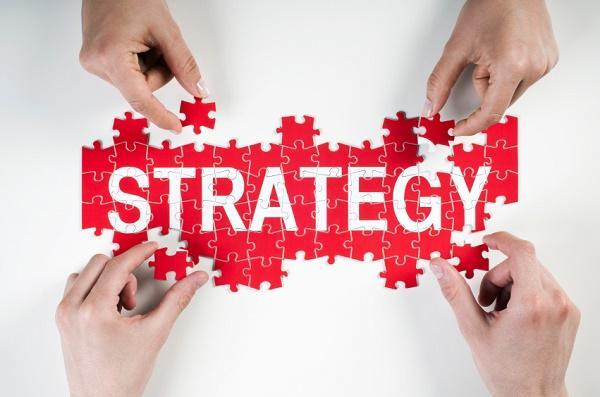
Growth in convenience, grocery, retail, and restaurant markets has never been more complex. Expansion into new geographies, rapid remodel cycles, and the need for brand consistency across thousands of sites create enormous pressure on facilities leaders. For years, the assumption has been that growth strains facilities budgets, but the data shows something more nuanced. With the right facilities strategy, scale can actually drive cost reduction, stronger brand loyalty, and higher profitability.
The Growth Challenge
Multi-site operators are expanding aggressively. U.S. convenience stores reached 150,000 locations in 2024, with foodservice sales growing at double-digit rates. Grocery continues to consolidate, with regional chains adding dozens of stores annually, while national retailers like Dollar General and Aldi plan thousands of openings in the next five years.
Yet scale often overwhelms traditional facilities structures. Ratios of facilities managers to stores increase as portfolios grow, stretching resources. In grocery, when operators rely heavily on internal teams, the burden quickly compounds, with managers unable to oversee hundreds of stores without burning out. Without scalable processes, growth brings inefficiencies rather than savings.
The Cost of Scaling Poorly
Industry benchmarks show the pitfalls of scaling without infrastructure:
- Average days to complete a work order in grocery is 14.7, far above the 8.7-day benchmark. Delays multiply as stores expand faster than management teams can keep up.
- Convenience stores report 38 percent increases in repair and maintenance costs since 2021, alongside a 40 percent rise in total operating costs. Without scalable systems, costs climb faster than revenue.
- Callback rates of 19 percent within 30 days at grocery sites prove that quality control erodes as portfolios grow.
Scaling without a facilities strategy not only inflates expenses, it directly impacts customer experience. Out-of-service signage, dark parking lots, or broken beverage equipment drive customers away, undermining revenue from new investments.
Why Scale Can Be an Advantage
Done right, scale creates leverage. With the right facilities model, multi-site portfolios achieve cost advantages through provider consolidation, technology-driven oversight, and preventive maintenance programs that spread savings across hundreds of locations.
- Provider consolidation and centralized oversight typically deliver 5 to 10 percent invoice savings across portfolios.
- Automation of invoice validation, duplicate ticket prevention, and SLA tracking reduces client administrative burden by 30 percent or more.
- Proactive provider performance monitoring increases first-time fix rates and reduces callbacks, compounding savings year over year.
In other words, scaling with the right facilities partner shifts the curve. Growth moves from driving higher costs to generating economies of scale.
Technology as the Scale Engine
Next-generation platforms like VixxoLink are designed for scalability. By embedding work order creation, automated invoice audits, and AI-powered troubleshooting in one system, they eliminate the hidden inefficiencies that cripple expanding portfolios.
- 40 years of work order history benchmark parts and labor costs automatically, preventing inflated pricing.
- Real-time dashboards allow multi-site leaders to track asset uptime, repair cycles, and provider performance across thousands of locations.
- AI-enabled tools like VITA provide instant access to manuals, schematics, and troubleshooting guides, improving technician productivity and cutting downtime by measurable percentages.
For executives, this means every new store or remodel can plug into the same scalable backbone. Administrative processes do not need to balloon, and service quality does not collapse as portfolios grow.
Preventive Maintenance as Scale Insurance
Preventive maintenance delivers even greater ROI at scale. Research shows unplanned maintenance is 3 to 9 times more expensive than planned maintenance. For refrigeration and HVAC assets, proactive care stabilizes costs within the first year and reduces repair work order volume by 35 to 40 percent over three years.
These savings multiply as portfolios grow. In a 500-site network, preventive cycles can eliminate thousands of unnecessary work orders, reduce truck rolls, and prevent product loss from refrigeration failures. At scale, preventive maintenance is not just cost containment, it is brand protection.
Turning Scale into Customer Experience
Scale also impacts customer perception. In convenience, 82 percent of customers are influenced by store design and upkeep when deciding to enter. Expansion without consistent facilities standards risks creating a fragmented brand. But with scalable oversight, every site — from rural convenience stores to urban grocery locations — reflects the same reliable brand promise.
For restaurant chains, this consistency is even more critical. Customers expect a uniform experience across every visit. A broken fryer or dark exterior sign does not just affect one store, it undermines brand trust across the system. Facilities leaders are now tasked with ensuring growth enhances, rather than dilutes, brand equity.
The Leadership Opportunity
Facilities leaders have an opportunity to redefine their role. Instead of being the department that slows expansion with rising costs, facilities can be positioned as a growth enabler. This requires a shift in mindset:
- Measure scalability, not just spend. Track how time-to-complete, first-time fix rates, and callbacks evolve as your footprint grows. These are the true indicators of sustainable scale.
- Invest in technology early. Systems like VixxoLink create consistent processes across portfolios, preventing the administrative bloat that undermines expansion.
- Align with revenue drivers. Tie facilities performance to customer-facing outcomes such as beverage uptime, energy savings, and store appearance.
- Redefine partnerships. Demand provider networks that can scale nationally with consistent SLAs, rather than relying on patchwork regional vendors.
Conclusion
The next era of multi-site growth will not be defined solely by the number of new stores opened or remodels completed. It will be defined by the ability to scale facilities operations without sacrificing cost efficiency, asset reliability, or customer experience.
As operating costs continue to rise, facilities leaders must prove that scale is not a liability, but an advantage. With technology, preventive strategies, and disciplined oversight, facilities can transform from a reactive cost center into a proactive engine of growth.
For executives and facility directors alike, the message is clear: scalability is no longer just about keeping up with expansion. It is about enabling it, sustaining it, and turning facilities into a competitive advantage.




